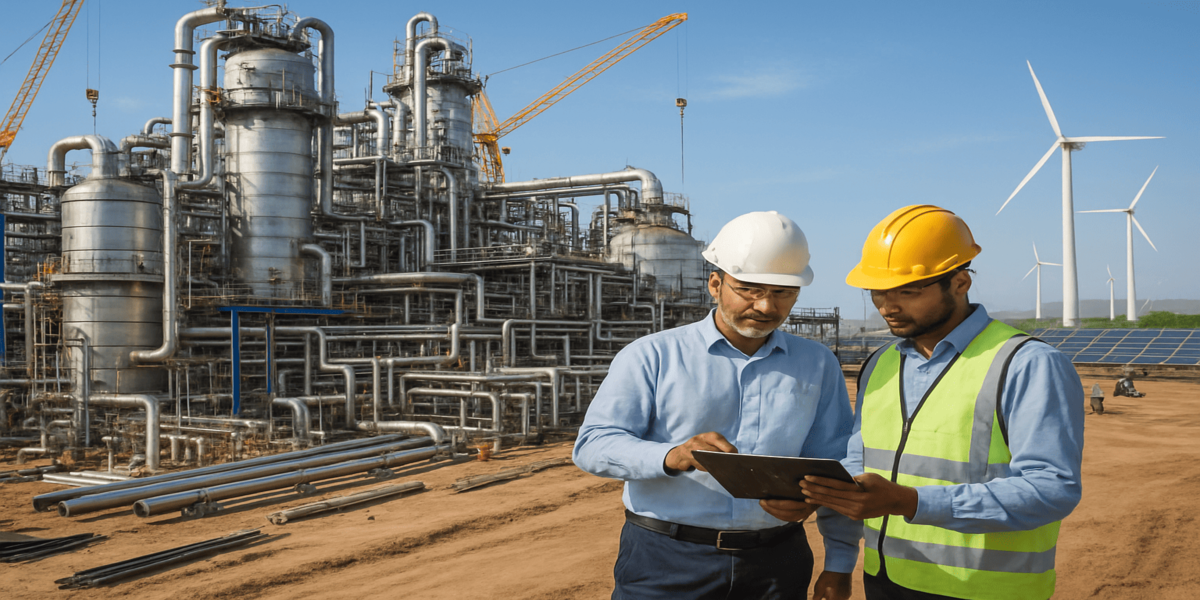Essential Considerations For Successful Greenfield Chemical Projects

Q1. Could you start by giving us a brief overview of your professional background, particularly focusing on your expertise in the industry?
I am a seasoned chemical engineer and Business Advisor with over 35 years of leadership experience in continuous process industries, including 15 years as CEO/Managing Director.
I have successfully led multiple greenfield and brownfield projects, specializing in technology selection, project feasibility, financial modeling, and execution strategy.
Today, I serve as an advisor to companies in India and abroad, providing guidance on opportunities in the chemical sector, project development, and growth strategies.
Q2. In the context of the Indian chemical industry, how can one identify a product with promising prospects, and what key indicators confirm that the opportunity is strong enough to pursue?
Start with market intelligence: study demand–supply gaps, consumption growth (CAGR), and end-use industries. If demand is rising at or above GDP growth, and imports are meeting the supply gap, the product merits deeper evaluation.
Key indicators include:
- Large and consistent import dependence
- Rising domestic consumption
- Attractive value chain linkages (backward or forward integration potential)
- Favorable government policy or tariff protection
Q3. What is the best approach to analyzing import data to inform business decisions in the chemical sector, and, upon confirmation of sustained demand, how should the feasibility of establishing local manufacturing be assessed?
Go beyond headline figures. Breakdown:
- Source countries and competitiveness
- Variants/grades imported
- CIF prices and landed costs
- Trends over 5–10 years (volatility, cyclicality)
This reveals both the scale of opportunity and your potential pricing power.
Once demand is confirmed, we can evaluate the local manufacturing feasibility in the following ways:
Start with raw material mapping:
- Availability, security, and pricing of feedstocks
- Local supply chains vs. dependence on imports
- Logistics costs and infrastructure requirements
Prepare a preliminary manufacturing cost estimate and compare it with landed import prices. Factor in customs duty, forex volatility, and any local strategic advantages.
Q4. What is the recommended approach for making plant capacity decisions in the chemical industry, and how should Capex and Opex analysis be integrated at this stage to ensure optimal investment and operational efficiency?
One should approach plant capacity decisions in both a technical and financial way:
From the Market Side
Align capacity with the demand–supply gap (don’t overbuild).
From the Finance side
Assess capital you can mobilize, project financing appetite, and scale economies.
The right capacity balances market absorption, financing ability, and risk management.
The role of Capex and Opex analysis at this stage is to:
- Develop an order-of-magnitude Capex estimate through preliminary vendor/EPC consultations
- Refine Opex by adding utilities, manpower, overheads, depreciation, and financing costs.
This gives a first-cut IRR/ROI picture — a key milestone before committing serious resources.
Q5. How critical is technology choice in chemical projects, what are the essential steps immediately following selection, and how should detailed engineering and execution be planned to ensure project success?
The technology choice in chemical projects is very critical. The same product can have different economics based on the process route. Evaluate:
- Capital intensity vs operating efficiency
- Environmental compliance costs
- Product quality consistency
- Engage domain experts to compare technology licensors objectively and select the appropriate one
The next step after choosing a technology is to enter into a contract for the Basic Engineering Design Package with the licensor. A comprehensive Basic Engineering Package (covering process, material & energy balances, equipment specs, instrumentation, safety, environment & waste management) forms the backbone of the project and avoids costly changes later.
Engage a competent Indian EPC/engineering partner for detailed Engineering, Procurement, and Construction assistance. Parallelly, finalize:
- Project location (logistics, utilities, market proximity)
- Approvals (environmental, statutory, safety)
- Financing partners (banks, institutions, strategic investors)
Q6. How can major risks in chemical projects be identified and mitigated, and what role do sustainability and regulatory compliance play in shaping effective risk management today?
Common risks include:
Feedstock Security: Mitigate with long-term supply contracts
Technology Reliability: Mitigate by choosing proven licensors
Market Volatility: Mitigate by product diversification and export options
Regulatory delays: Mitigate by early compliance planning
Sustainability and compliance are extremely important today. Investors, regulators, and customers all demand sustainable operations. Early integration of energy efficiency, waste minimization, water management, and circular economy practices not only ensures compliance but can also enhance competitiveness.
Q7. How can one effectively secure project bankability and foster investor confidence throughout the project lifecycle?
Develop a comprehensive business plan with:
- Demand–supply justification
- Capex/Opex models
- Sensitivity analysis (pricing, feedstock, forex)
- Risk mitigation framework
- Clear implementation roadmap
This gives lenders and investors the confidence that the project is both technically viable and financially resilient.
Comments
No comments yet. Be the first to comment!
